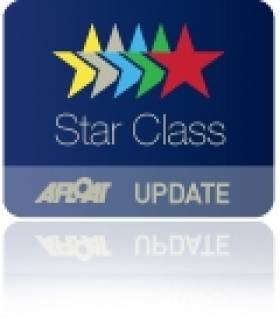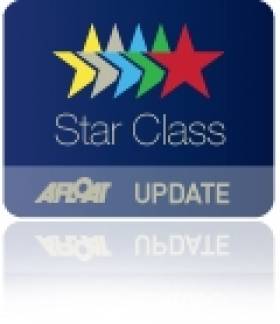Displaying items by tag: Euros
O'Leary and Burrows Slip to Fifth at Star Euros
Lighter winds saw Peter O'Leary and David Burrows drop to fifth place overall and Italians Diego Negri and Enrico Voltolini continue at the top of the leaderboard after three more races at the Star European Championships in Dun Laoghaire.
The weather gods finally allowed a full day of racing at the Championship at Dun Laoghaire as a moderate westerly breeze allowed three races. It is hoped to have two races tomorrow ahead of the forecast of yet more heavy winds that have dominated the championship so far.
With their form unchanged since Sunday, Italians Negri and Voltolini extended their overall lead in the 26-boat fleet, counting one win plus a third place while discarding their eighth place in race six.
Polish 2008 World champion and past Finn Olympic Gold medallist Mateusz Kusznierewicz with Dominik Zycki also showed good pace, with a fifth place and a win yesterday while discarding a ninth in the hunt for the overall lead. Canada's Richard Clarke with Tyler Bjorn also moved up a place to third overnight as the final two races are slated for Friday – weather permitting.
Star European Championship 2011 at Royal St. George YC, Dun Laoghaire, Ireland
(Provisional overall standings after six races):
1st ITA Diego Negri & Enrico Voltolini
2nd POL Mateusz Kusznierewicz Dominik Zycki
3rd CAN Richard Clarke & Tyler Bjorn
4th FRA Guillaume Florent & Pascal Rambeau
5th IRL Peter O'Leary & David Burrows
6th POR Afonso Domingos & Frederico Melo
Three Races Planned to Get Star Euros Back on Track
If winds ease tomorrow - and it is doubtful - three races of the Star European championships will be sailed to get the Dublin Bay regatta back on schedule.
High winds once again dictated the racing schedule at the Star European Championship at Dun Laoghaire on the third day of the series that has had two races out of the original eight-race programme completed.
The overnight offshore gale eased slightly during the morning and a two-hour postponement by principal race officer David Lovegrove offered some hope of racing for the 27 crews waiting at the Royal St. George YC.
However, gale force gusts continued and the programme was abandoned for the day leaving the sailors free to take the 20-minute train ride into the historic Dublin city-centre offering the famous Book of Kells at Trinity College, the Jameson Irish Whiskey centre and other attractions.
Star European Championship 2011 at Royal St. George YC, Dun Laoghaire, Ireland
(Overall standings after two races):
1st ITA Diego Negri & Enrico Voltolini
2nd FRA Guillaume Florent & Pascal Rambeau
3rd IRL Peter O'Leary & David Burrows
4th FRA Xavier Rohart Pierre & Alexis Ponsot
5th CAN Richard Clarke & Tyler Bjorn
6th POR Afonso Domingos & Frederico Melo
Photos HERE































































